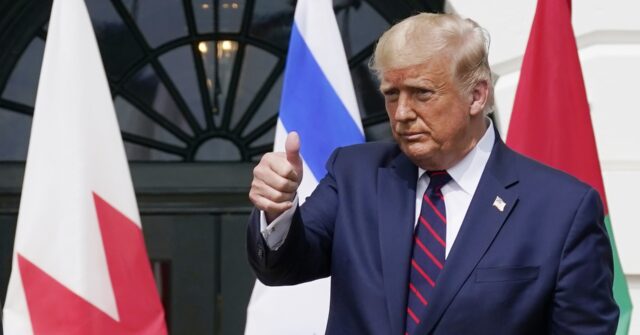As President-elect Donald Trump assumes office, he is poised to potentially reshape the Middle Eastern landscape, emerging from the tumultuous decisions of the Biden-Harris administration. The previous administration’s policies have left the region in disarray, characterized by the easing of sanctions on Iran, reduced arms support to Saudi Arabia, the delisting of the Houthis in Yemen as a terrorist organization, and the restoration of funding to the United Nations Relief and Works Agency (UNRWA), which is linked to Palestinian terrorism. These decisions culminated in the intense conflict that erupted on October 7. However, Israel’s resilient military responses provide a glimmer of hope for peace in the region.
Israel has achieved significant military successes, effectively diminishing Hamas and Hezbollah’s operational capabilities. These achievements include targeting key leadership figures and demonstrating the capability to strike Iranian proxies in the region, such as the Houthis. The most critical outcome is Israel’s success in neutralizing Iran’s air defenses, creating an environment where future strikes on Iranian nuclear facilities and other strategic targets could occur without substantial risk. Despite this progress, Israel faces growing war fatigue, particularly as it grapples with the ongoing plight of hostages in Gaza and the emotional and economic toll on its citizens. Current public sentiment reflects a drift away from prolonged conflict towards a diplomatic resolution, creating a timely opportunity for negotiation.
Addressing the multi-faceted challenges in the region requires careful consideration of four primary fronts: the Iranian front, the Saudi front, the Palestinian front, and the geopolitical landscape. On the Iranian front, Trump has signaled a willingness to negotiate, potentially presenting a deal that would involve stringent nuclear restrictions and a cessation of support for terrorism. Such a deal could lead to the dismantling of Iran’s nuclear capabilities and create mechanisms for monitoring its compliance. In exchange, Israel could commit to a ceasefire in Gaza, facilitating the safe exit of Hamas leaders and the release of hostages—a bargaining chip that could redefine the regional power dynamics.
The Saudi front reveals another significant avenue for normalization and stabilization in the region. Trump’s past efforts to facilitate Saudi-Israeli cooperation could be rekindled, moving away from the current administration’s focus on establishing a Palestinian state as a precondition. There is potential for both nations to commit to frameworks that support Palestinian development without immediate statehood. This diplomatic engagement could serve as a catalyst for broader regional acceptance of Israel and establish groundwork for future peace agreements.
On the Palestinian front, two primary solutions could be considered: an international rebuilding initiative for Gaza in exchange for a non-state governance structure, or Israeli annexation with a long-term vision for possible statehood. Both scenarios require substantial concessions and innovative agreements that prevent the escalation of hostilities while offering improved quality of life to Palestinians. Proposals may include joint management of water resources and cultural collaborations that elevate Palestinian identity while ensuring Israel’s control over security matters.
Lastly, the geopolitical front necessitates a strategic U.S. agreement with Russia to mitigate further escalation and stabilize regional tensions. Possible exchanges could involve ceasing Iranian support and cutting Hezbollah’s supply lines in return for specific concessions in Ukraine. This nuanced approach could reduce hostilities and foster cooperation, allowing China an observational role in OPEC, thereby preventing its military intervention. While these discussions are complex, a step-by-step approach focusing on achievable agreements could build momentum toward comprehensive peace.
Encouraging signs for a renewed peace process are already evident, as President-elect Trump has initiated discussions with key Israeli officials and appointed individuals with strong pro-Israel credentials to prominent positions within his administration. Additionally, outreach to Arab and Muslim populations reflects a commitment to fostering peace in the region. Although challenges persist in realizing the much-discussed “Deal of the Century,” the current context presents an unprecedented opportunity for progress—largely due to Israel’s military sacrifices and shifts in American voter perspectives. The prospect of heightened U.S.-Israel collaboration under Trump’s leadership may create a unique environment conducive to forging lasting peace across the Middle East.

